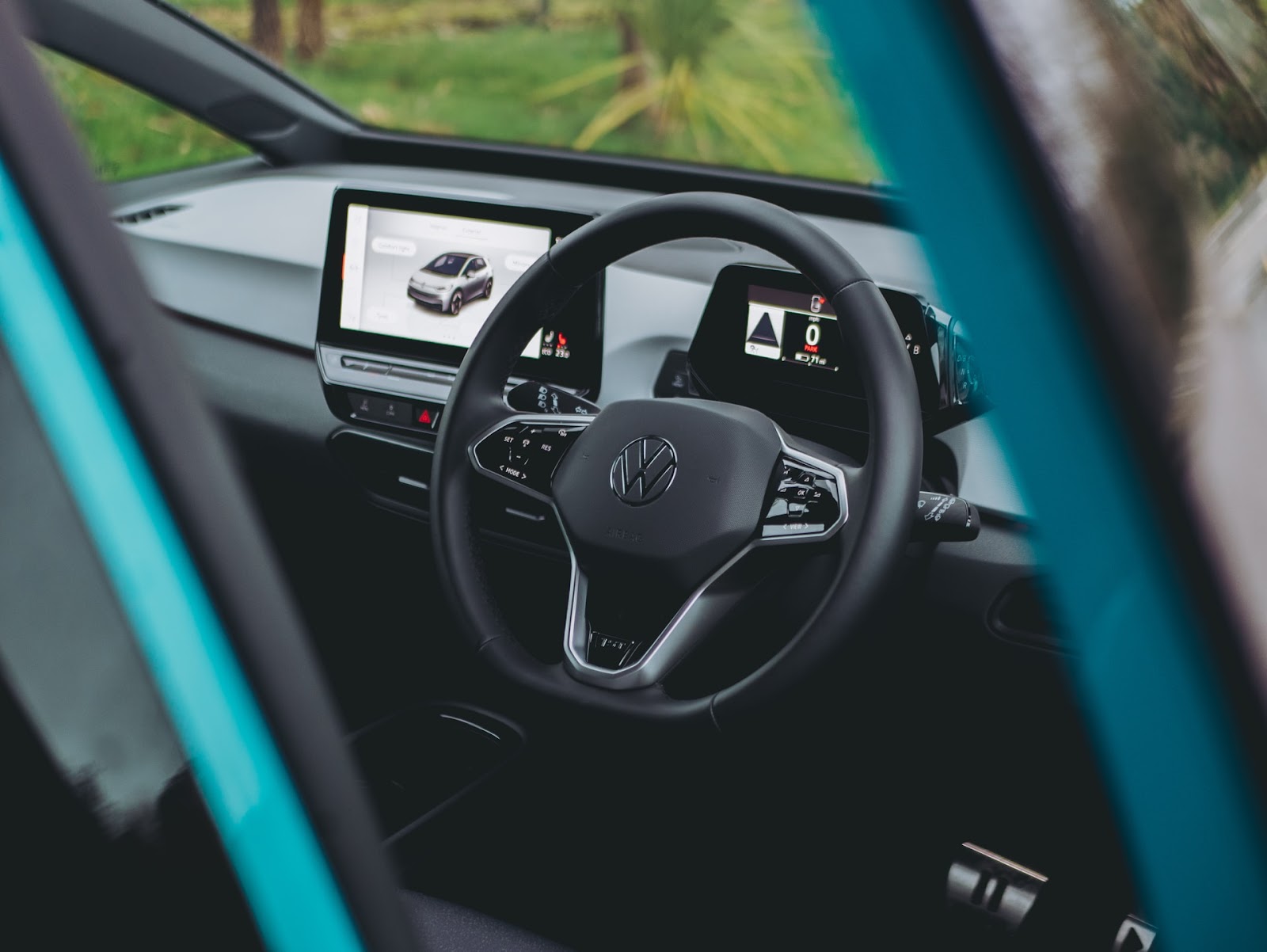Electric Car Maintenance Tips
.avif)
If you’ve been considering getting an electric car but you’re unsure of how much maintenance is involved compared to internal combustion engine vehicles, you’ll be happy to know there’s a lot less maintenance to keep track of. Whereas traditional petrol or diesel engine vehicles have hundreds (or sometimes thousands) of moving parts in order to work, electric vehicles (EVs) have a lot fewer components and therefore require far less maintenance.
Plus, with a loveelectric lease, you won’t need to touch your vehicle in terms of maintenance, as servicing, maintenance and tyres are included in your lease (along with breakdown cover!). When you lease a vehicle from loveelectric, you can just sit back and relax knowing we’ve got you covered, but these tips are good general practice to ensure the safety and life of your vehicle, as it’s good to check these little things yourself as you would with any other vehicle!
Battery health
Arguably the most important factor in ensuring you get the most out of your EV is prioritising the health of the battery, as a healthy battery means it will continue to hold a charge well and you’ll get the most amount of range. There are a number of things you can do to improve battery health and avoid battery degradation.

Temperature
Battery health is closely linked to temperature, particularly extreme temperature changes, and the basic rule is that you want to avoid situations where your battery might overheat. Although there are thermal management systems to protect the lithium-ion batteries in electric cars, they are very sensitive to temperature, so understanding how the basics of EV maintenance work can be really helpful in extending the life of your battery.
First and foremost, think about where you’re parking your car and how exposed it will be to the elements. If you can, try to avoid parking your vehicle in direct sunlight, especially during summer, as a lot of your battery will go towards cooling down the battery (as well as air conditioning if it’s very hot!). Instead, try to find a spot in the shade so your vehicle won’t experience as dramatic of temperature changes. Similarly, it’s also a good idea not to park your vehicle somewhere it will be exposed to very cold temperatures, so during the winter, keep your EV in a garage if you have one.
Another tip is to avoid charging your EV immediately after a long trip. It can be tempting to charge your car as soon as you get home after a long journey, but if you want to prioritise extending the lifespan of your battery, it’s better to wait until your battery has had a chance to cool down before charging it. If you have a smart charger, you can schedule a charging time beforehand, so that way you can plug in your vehicle to your home charging point when you get home but still allow the battery to cool down before recharging it.

Avoid Overcharging
One of the best ways to ensure your battery lasts for as long as possible is by not charging your vehicle to 100% every time, as overcharging will actually begin to damage your battery over the long term, leaving you with less range than you previously had. This might sound odd but you may have noticed something similar with other electronic devices that have batteries such as laptops or mobile phones. If you constantly have them plugged into a charger, over time the battery won’t hold a charge as well, and this is the same for the battery in your EV.
A good way to ensure you’re not overcharging is to try not to charge past 80% capacity, so when it reaches this point you can just remove the charging cable or depending on the charger you have, you may be able to set this up on your charging app to stop when it reaches 80%. Also, if you can, try not to charge your EV before it’s at 10-20% for this same reason. We do suggest checking the owner's manual for specific charging guidance for your vehicle, just in case the manufacturer has more individual recommendations for your model.
Additionally, if your EV has the option to use a rapid charging station, try to limit using them as much as possible, as when you charge your vehicle using a rapid charger the battery will overheat, leading it to use energy to cool it back down, leaving you with less charge.If you’d like to learn more about battery health, increasing range and charging, we have a number of resources on our blog page.

Tyres
- Tyre Pressure
Just like you would with any other vehicle, it’s important to check the tyre pressure of your electric car every month to confirm it’s at a good level. Purchasing a tyre pressure gauge could be a good call, as this will allow you to check the pressure levels frequently (which could come in handy during longer journeys) but you don’t want to invest in one quite yet, most petrol stations will have a tyre pressure gauge you can use. If you’re unsure of what the ideal tyre pressure level is for your vehicle, you’ll typically have this information located on an information placard in your car door frame.
- Tread Depth
Again, just as you would with a petrol or diesel engine vehicle, it’s important to check your tread depth monthly to ensure you’re at a safe and legal depth. New tyres will have a tread depth around 8mm, and once it dips down to 2mm it’s time to have them replaced, and the legal limit for tread depth is 1.6mm.
With a loveelectric lease, you won’t need to change these yourself as tyres are included! Just contact us and we’ll get you sorted as soon as we can, so you can get back on the road!
EVs are actually heavier than other traditional ICE vehicles, but that doesn’t mean the tyres wear down faster, as EVs use a different kind of tyres that are designed to withstand the greater weight of an EV. In fact, according to KwikFit, ICE tyres actually wear down 30% faster than tyres designed for electric vehicles.

Brakes
Almost all EVs use regenerative braking, so you will most likely not need to have your brake pads replaced as frequently as brake pads in a traditional petrol or diesel engine. However, it’s still good to check the levels of brake fluid and coolant, but this is best left to qualified mechanics, so it’s good to keep an eye on but when you lease from loveelectric, you can leave that to us!
Windshield wiper fluid
Just like a standard petrol or diesel engine car, it’s a good idea to check that the windscreen wipers are working and replaced once they are worn, or after 15,000 miles. It’s also important to maintain a good level of windshield wiper fluid in your car. If you notice you’re running low, of course, fill it up but it’s a good idea to check once a month or before going on a long journey.

Charging cables
The most common causes of poor charging are due to EV cables and plugs not being kept clean and dry. Although charging cables are designed to withstand some wear and tear, it’s good practice to store them in a dry place and make sure no debris gets lodged in the socket. Although these cables and sockets are designed to withstand moisture if your cable and socket happen to get very wet, give it 24 hours to air dry before plugging it in to ensure the cable won’t get damaged. Don’t be tempted to dry it using the heat from tools like hairdryers - it’s much better and safer to let it air dry.
An easy tip to help keep your charging cable in good shape is to store it in a small storage bag when not in use. This will add another layer of protection along with the added bonus of it being more portable if you’re bringing it along in your journey.




